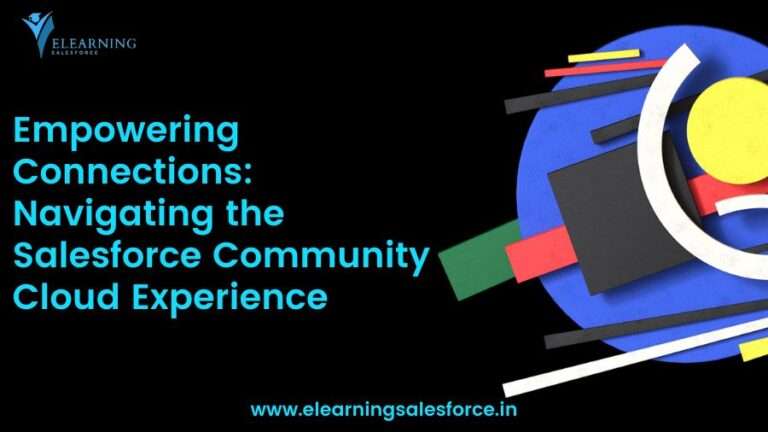Introduction to Salesforce and Agile Project Management
In the ever-evolving landscape of project management, the synergy between Salesforce and Agile methodologies has become a catalyst for transformative success. Combining the robust capabilities of Salesforce with the agility of Agile project management principles opens new dimensions of collaboration and efficiency.
Understanding Agile Project Management Principles
Agile project management is a set of principles and practices that prioritize flexibility, collaboration, and iterative progress. It’s a departure from traditional, linear project management approaches, emphasizing adaptability to change and continuous improvement.
Salesforce’s Integration with Agile Methodologies
1. User Story Management
Salesforce offers tools for efficient user story management, allowing teams to capture and prioritize requirements in a way that aligns seamlessly with Agile practices.
2. Sprint Planning and Tracking
Salesforce’s project management features facilitate sprint planning and tracking, enabling teams to set realistic goals, track progress, and adapt to changing priorities during the project lifecycle.
3. Continuous Feedback Loops
The integration of Salesforce in Agile environments promotes continuous feedback loops. Stakeholders can provide real-time feedback, fostering collaboration and ensuring that the project stays aligned with business goals.
Benefits of Utilizing Salesforce in Agile Project Management
1. Enhanced Collaboration
Salesforce provides a centralized platform where team members can collaborate in real-time, fostering transparency and communication crucial for Agile success.
2. Real-time Project Visibility
Agile projects thrive on visibility. Salesforce’s reporting and dashboard features offer real-time insights into project status, helping teams make data-driven decisions.
3. Improved Adaptability
Salesforce’s customizable nature allows teams to adapt their project management processes to changing requirements, a cornerstone of Agile methodologies.
Real-world Success Stories of Salesforce in Agile Environments
Explore how organizations across different industries have successfully integrated Salesforce into their Agile project management workflows, achieving higher productivity and project success.
Challenges and Solutions in Implementing Salesforce for Agile
1. User Training and Adoption
Overcoming resistance to change and ensuring effective user training are critical aspects of successfully implementing Salesforce in Agile. Addressing these challenges ensures widespread adoption.
2. Customization Challenges
While Salesforce’s customization capabilities are a strength, finding the right balance without overcomplicating the system is a common challenge. Streamlined customization is key.
3. Scaling Agile for Large Projects
Scaling Agile principles for large projects requires thoughtful planning and coordination. Salesforce’s scalability provides a foundation for managing complexity.
Future Trends in Salesforce and Agile Project Management
Stay ahead of the curve by exploring emerging trends, such as AI-driven project management, enhanced collaboration features, and further integration with popular Agile tools.
Steps to Implement Salesforce in an Agile Project Management Approach
1. Customizing Salesforce for Agile Workflows
Tailor Salesforce to align with Agile workflows, incorporating user stories, sprints, and other Agile artifacts seamlessly.
2. Integrating Third-party Agile Tools
Leverage Salesforce’s integration capabilities to connect with third-party Agile tools, ensuring a cohesive and comprehensive Agile project management ecosystem.
3. Training Teams on Agile Principles
Invest in comprehensive training programs to equip teams with a strong understanding of Agile principles and how they align with Salesforce.
4. Continuous Iteration and Improvement
Adopt Agile principles internally by encouraging continuous iteration and improvement of processes, ensuring that the Agile-Salesforce integration remains dynamic.
Comparing Salesforce in Agile Project Management with Other Platforms
Explore how Salesforce’s approach to Agile project management compares with other platforms, considering factors such as ease of use, scalability, and integration capabilities.
Cost Considerations and ROI of Salesforce in Agile
Understand the financial aspects of implementing Salesforce in Agile project management, including upfront costs, ongoing expenses, and the expected return on investment.
Tips for a Successful Transition to Salesforce-Agile Integration
1. Foster Open Communication
Create an environment where open communication is encouraged, fostering collaboration and transparency essential for Agile success.
2. Prioritize User Experience
Ensure that Salesforce is configured to provide a user-friendly experience that aligns with Agile values, promoting ease of use and adoption.
3. Embrace Agile Values
Encourage teams to embrace Agile values, including adaptability, collaboration, and a focus on delivering value to customers.
Common Myths about Salesforce and Agile Project Management
Dispelling common myths about integrating Salesforce into Agile workflows clarifies expectations and helps teams make informed decisions about their project management approach.
Conclusion
Salesforce and Agile project management are not just tools; they’re enablers of a more dynamic and responsive way of delivering projects. The integration of Salesforce enhances collaboration, transparency, and adaptability, aligning seamlessly with Agile principles.
FAQs
- Can Salesforce be integrated into existing Agile workflows?
- Yes, Salesforce is highly customizable and can be tailored to align with existing Agile workflows.
- How does Salesforce promote collaboration in Agile teams?
- Salesforce provides a centralized platform for real-time collaboration, fostering transparency and communication.
- What challenges might organizations face in transitioning to Salesforce-Agile integration?
- Challenges include user training, customization complexities, and scaling Agile principles for larger projects.
- Is Salesforce-Agile integration suitable for small businesses?
- Yes, Salesforce’s scalability makes it suitable for businesses of all sizes, offering tailored solutions.
- How can teams measure the success of their Salesforce-Agile integration?
- Key metrics include project delivery speed, customer satisfaction, and the adaptability of Agile workflows.




